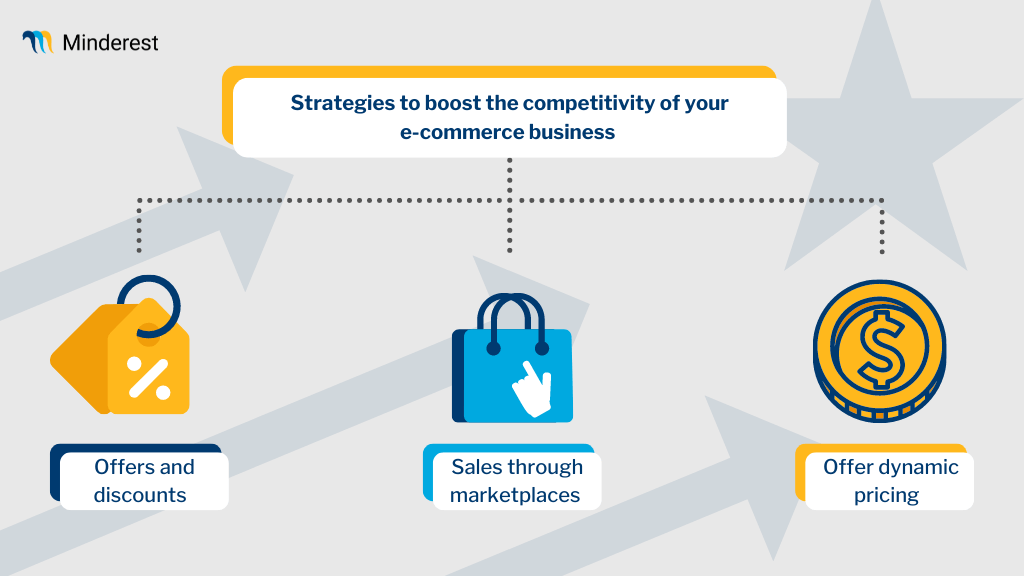

Price remains a key factor in consumers’ decision-making. This is especially true today due to increased inflation. Since the darkest moments of the COVID-19 pandemic, the price of products, services and energy has risen. Users are more price-sensitive and want companies to show them more empathy. However, at the same time, e-commerce businesses have also been affected by socio-economic changes nationally and internationally. Finding a balance between customers’ needs and companies’ profitability is vital. This balance is embodied by the right pricing strategy with competitive prices.
One of the most pertinent data to consider highlights that 9 out of 10 consumers search for additional information before deciding to buy a product or service. They also tend to be familiar with using discount portals and offer comparison sites to check that they are looking at the best prices. Ultimately, consumers expect attractive prices in line with their expectations. You can use the following strategies to help:
Strategies to boost the competitivity of your e-commerce business

Offers and discounts
One of the most popular tactics to increase brands’ and retailers’ profitability is by launching offers and discounts. Although they tend to be quite successful, the main risk is that if you enter a pricing war, it can lead to reduced profits for the company. To avoid this, you need well-defined terms and conditions and time-bound discounts. To stand out from other retailers, you can create your own offer calendar, which goes well beyond well-known events like Black Friday or the summer sales.
Another successful tactic — as Amazon has shown — is introducing weekly flash deals. This will help to drive higher traffic to your website and speed up the final buying decision due to the sense of urgency created for users.
Sales through marketplaces
Over the last few years, the volume of users that purchase on marketplaces like Amazon or eBay has also increased. This is mainly due to their competitive pricing. They also tend to offer free shipping and build users’ trust. According to the Estudio Marketplaces 2022 study by Tandem Up, 40% of users who usually buy on these portals have increased their average ticket and frequency of purchase. Using this data, you can assess whether it is appropriate to incorporate marketplaces in your strategy as a new sales channel. It will also help you offer prices in line with these channels’ generally more volatile supply and demand.
Offer dynamic pricing
Dynamic pricing will also help you be more competitive as it allows you to continuously adapt your prices to changes in the online market. It will help you respond to competitors’ actions and encourage users to feel more confident about the value of products and services, which will fluctuate in line with demand. Before implementing a dynamic pricing strategy, you need to install a pricing suite in your e-commerce to monitor competitors’ prices and stay up to date with the latest developments.
The most advanced pricing suites will ensure that this strategy is successful. They will also optimise your company’s prices worldwide, thereby increasing profitability. Thanks to their ability to analyse a massive volume of data, and present it clearly, you can optimise your decision-making. Pricing changes will be more agile, ensuring you do not lose sales or growth opportunities.
Find out how Minderest can take your business to the next level.
Contact our pricing experts to see the platform in action.
Related Articles

AI Agents and Holiday Season: How to Adapt Your Pricing Strategy
Holiday season planning used to revolve around creative campaigns, emotional storytelling, and optimizing the user experience. However, a silent revolution is changing the rules of the game. The rise...
How Surveillance Pricing Works and Its Applications for Your Business
The term "Surveillance Pricing" might conjure images of corporate espionage and price manipulation. However, this initial perception hides one of the most sophisticated and powerful strategies in...